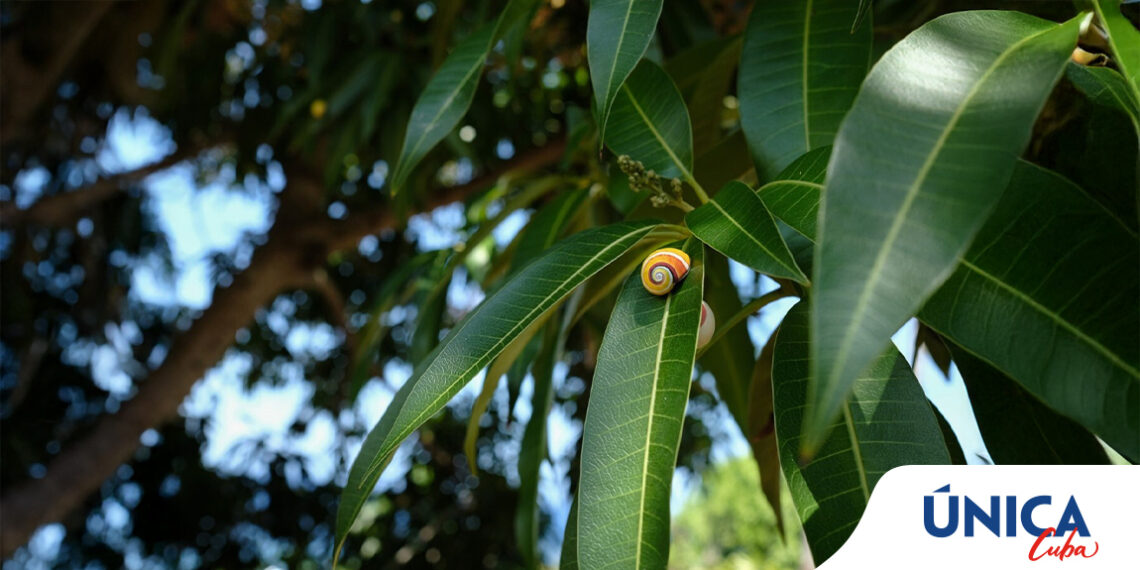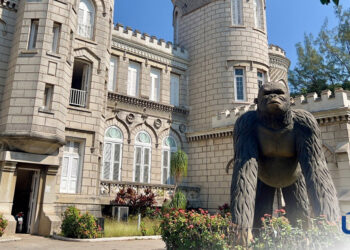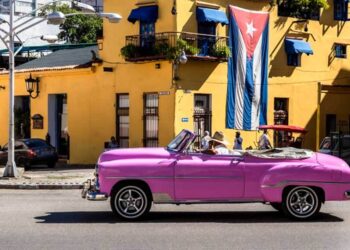Out in the wilds of eastern Cuba, 620 miles from the capital Havana, the world’s most beautiful snail lives among the trees.
This week the polymita, known as the ‘paintedsnails’ of Baracoa and Maisí, hit the international headlines as a Cuba–UK collaboration announced a bid to save the endangered snail from extinction.
In 2022, the polymita picta won Mollusc of the Year, too. Its prize was to have its means of reproduction, its love-dart, examined and its genome sequenced.
Unfortunately, it’s the snail’s beautiful rainbow colours – bands and whorls of lime green, canary yellow, red, snow white, jet black – that is driving the six polymita species towards extinction. Collectors sell the pretty shells to tourists and trade them online. Climate change is a threat, too.
Now, a Cuban biologist and a UK professor of evolutionary genetics are joining forces to save the endemic species. Cuban professor Bernardo Reyes-Tur is attempting to breed the tree snails in his office at the Oriente University in Santiago de Cuba whereas in the UK, Professor Angus Davison is preserving snail tissue in cryogenic freezers at his Nottingham University laboratory base.
It’s not known how the polymita – meaning many stripes – acquired its gorgeous colours but the study hopes to shed light on how it does.

In beautiful Baracoa, a city of legends and fables, locals will tell you, though, how it came about its multi-coloured home. When the polymita arrived in Baracoa, it had no colours and was lonely. But the snail eventually found its paintbox to colour its home: yellow from the sun to foster happiness, green from the land for hope, red from the earth for strength, white from the crest of the waves to represent purity, and black from the sky at night where the creature would take refuge to protect locals from pain. Visitors will notice that the colour blue is never found on theshells. The polymita did not take the blue of the sky – symbolic of peace – for its shell because it had not found friendship and love when first arriving in Baracoa.
In the 90s, the snail was a fairly common sight around Baracoa, now travellers need to head a bit further off the beaten track to find them – where they’re attached to their favourite glossy leaves and tree branches. Around 200 of the 800 species of trees found in Cuba are favoured by the polymitas as homes. One of the polymita species only lives in remote forest in the Sagua de Tánamo mountains. More accessible are the forest trails of the Unesco-protected Alejandro de Humboldt National Park, one hour’s drive north of Baracoa, where a guide is needed.
For visitors with not much time, or without legs for hiking, there’s a much easier spot to find and photograph them. At the eastern edge of the Yumurí Canyon, some 17 miles south of Baracoa, a family cares for the hermaphrodite in its garden and welcomes visitors. You’ll find the Matos-Duran family house up a steep road and opposite the canyon viewpoint. The family has opened its home to visitors since 2012 and is supported by Planeterra, a non-profit strengthening Community Based Tourism. An incredible collection of the snail shells can be seen, too, at the Natural History Museum in Holguín in eastern Cuba.

Love Cuba is the UK’s leading Cuba holiday specialist. Click here for more information on Cuba holidays, Multi Centre Cuba Holidays or Tailor Made Cuba Holidays – please don’t hesitate to contact our friendly team of Cuba holiday specialists on 0207 071 3636 or email: enquiries@lovecuba.com today.






























